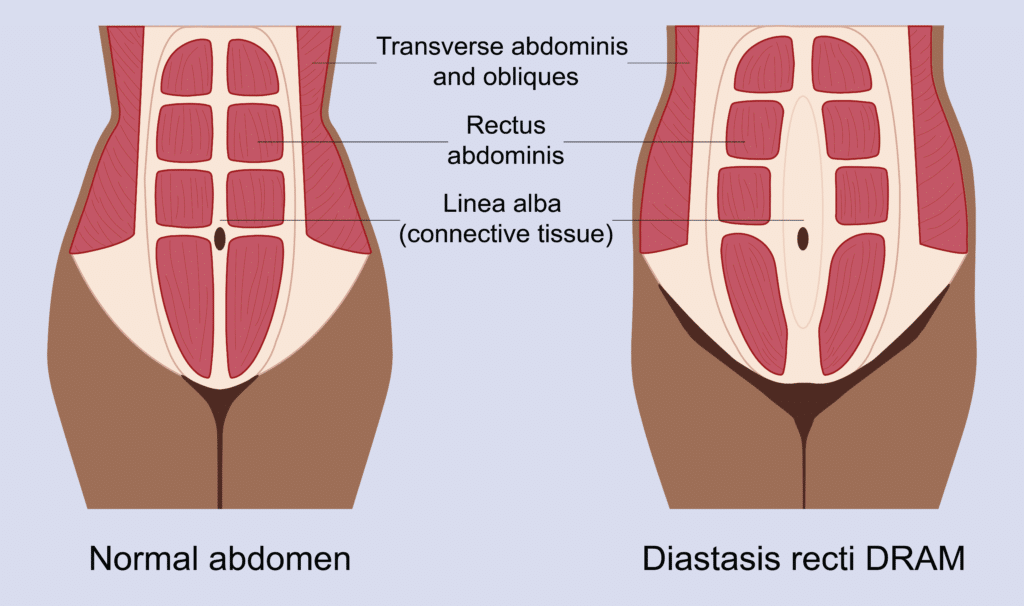Stubborn Mommy Belly
Are you a mom struggling to lose that stubborn postpartum belly? You’re not alone. Many women find it challenging to shed the “mommy belly” even after months of trying. But what if there was a science-backed, effective way to target that stubborn body fat? Enter intermittent fasting, and lifestyle changes that are helping moms worldwide reclaim their confidence and health. In this blog, Intermittent Fasting Mommy Belly will cover a lot of facts, science, and weight loss tips associated with an amazing Kindle book.

In this comprehensive guide, we’ll dive deep into how intermittent fasting can help you lose postpartum belly fat, the science behind it, and practical tips to get started. Whether you’re a busy mom or someone looking to improve your health, this blog is your go-to resource.
What Is Intermittent Fasting?
Intermittent fasting (IF) is not a diet but an eating pattern that cycles between periods of eating and fasting. It’s not about what you eat but when you eat. The idea is to give your body a break from constant food intake, allowing it to tap into fat stores for energy.
Intermittent fasting isn’t just another diet trend—it’s a purposeful and science-backed way of eating that aligns with our body’s natural rhythms. At its core, IF is about alternating between periods of eating and fasting, allowing the body to efficiently use stored energy while kickstarting essential repair and healing processes. By giving your system, a break from constant digestion, IF promotes metabolic balance, cellular rejuvenation, and overall well-being, making it a powerful tool for those seeking a healthier lifestyle.
Why Is It So Popular?
From Jack Dorsey to Kourtney Kardashian, and even US President Donald Trump, intermittent fasting has gained a massive following. It’s not just a trend; it’s backed by science. Studies show that IF can improve insulin sensitivity, boost human growth hormone levels, and promote fat loss, especially around the belly.
Jack Dorsey – Tech Entrepreneur
Jack Dorsey, co-founder and former CEO of Twitter, has adopted an intermittent fasting regimen where he consumes only one meal per day, typically dinner between 6:30 and 9 p.m. He believes this practice enhances his focus and efficiency throughout the day
Kourtney Kardashian – Reality TV Star
Kourtney Kardashian practices intermittent fasting by not eating for 14 to 16 hours after dinner and doing a 24-hour fast once every week. During the 24-hour fast, she drinks water and bone broth before having a regular dinner. She also sticks to a low-carb diet, with high proteins and healthy fats, eating three meals a day—with no snacking in between.
Donald Trump – US President
U.S. President Donald Trump has reportedly engaged in intermittent fasting (IF), suggesting that this dietary trend has reached a broad audience. Although Trump does not frequently discuss his fitness routines, his interest in fasting underscores its popularity among various demographics, including politicians and celebrities. Reports indicate that Trump adopts an eating pattern that resembles intermittent fasting, typically fasting for 14 to 16 hours and consuming a substantial dinner. This reflects the increasing appeal of IF as a lifestyle choice for many individuals.

Intermittent Fasting Mommy Belly
What Is Mommy Belly?
“Mommy belly” is that stubborn post-pregnancy pouch that just won’t seem to budge, no matter how much you diet or exercise. It’s often caused by a mix of factors, including stretched abdominal muscles (diastasis recti), hormonal shifts, excess fat, and a weakened core. The good news? You don’t have to live with it forever! A combination of core-strengthening exercises, proper nutrition, and lifestyle changes, like intermittent fasting can help flatten and strengthen your midsection over time. Understanding what’s really behind mommy belly is the first step to reclaiming your confidence and feeling strong from the inside out!
After pregnancy, many women struggle with two types of fat:
Subcutaneous Fat: The soft fat under your skin.
Visceral Fat: The dangerous fat surrounding your internal organs, linked to heart disease and cardiovascular disease.
Intermittent fasting targets both types of fat, but it’s particularly effective against visceral fat.

Key Points for Effective IF
Intermittent fasting can effectively reduce stubborn mommy belly fat by creating a calorie deficit and encouraging metabolic processes that promote fat burning. Here are some detailed insights:
Caloric Deficit: The cornerstone of weight loss, including reducing belly fat, is achieving a calorie deficit. Intermittent fasting establishes this deficit by limiting the eating window, which naturally lowers calorie intake and helps the body turn to stored fat for energy.
Tailored Strategies: There are various methods of intermittent fasting, such as the popular 16/8 method, where you fast for 16 hours and eat during an 8-hour window. This method can be customized to accommodate individual body types and lifestyles, ensuring that each person can find a fasting schedule that works best for them and optimizes fat loss in the abdominal area.
Healthy Lifestyle: For the best results in reducing belly fat, it is essential to combine intermittent fasting with a nutritious diet and regular physical activity. This holistic approach not only accelerates fat loss but also promotes overall health and well-being, making it easier to maintain these changes long-term.
Meal Timing: At the heart of intermittent fasting is the concept of meal timing rather than the specific foods consumed. This focus on when to eat can be particularly appealing to those looking to trim belly fat without the stress of constantly counting calories or restricting specific food groups. By strategically timing meals, the body can enter fat-burning phases more effectively, aiding in belly fat reduction.
The Best Guide for Intermittent Fasting
To overcome your stubborn weight, in this guide, you’ll find easy-to-follow fasting and meal plans, and powerful success stories to keep you motivated every step of the way. Whether you’re a beginner or looking to optimize your fasting routine, this guide is your roadmap to a healthier, more vibrant you, packed with easy-to-follow fasting plans, delicious meal guides, and real-life success stories that will keep you motivated every step of the way.
Whether you’re just starting or looking to refine your fasting routine, this book equips you with the knowledge and tools to thrive, not just survive. If you’re ready to take charge of your health, feel energized, and unlock the best version of yourself, then this is the book you’ve been waiting for!
How Does Intermittent Fasting Work?
Insulin Levels: When you eat, your insulin levels rise, signaling your body to store fat. Fasting lowers insulin, allowing your body to burn fat.
Fat Burning: In a fasted state, your body uses fat as its primary energy source.
Human Growth Hormone: Fasting boosts this important hormone, which aids in fat loss and preserves muscle mass.
Calorie Deficit: By limiting the eating window, IF naturally reduces calorie intake, which can lead to weight loss and fat reduction..
Hormonal Changes: IF helps regulate hormones like insulin and human growth hormone (HGH). Lower insulin levels and increased HGH can promote fat burning.
Metabolic State: During fasting periods, the body shifts from using glucose for energy to burning stored fat, including belly fat.
Reduced Inflammation: IF has been linked to reduced inflammation, which can help with overall health and weight loss.
Improved Digestion: Giving the digestive system a break can improve gut health, which may also contribute to weight loss.
Best Intermittent Fasting Schedules for Mommy Belly
Intermittent fasting (IF) affects belly fat by burning fat stores and increasing insulin sensitivity. However, some studies suggest that belly fat can be resistant to IF. Intermittent fasting can be an effective way to address postpartum belly or “mommy belly.” Not all fasting schedules are created equal. Here are the most effective ones for losing belly fat:
1. Time-Restricted Eating (16:8 Method)
How It Works: Fast for 16 hours and eat during an 8-hour eating window.
Example: Skip breakfast, eat from 12 PM to 8 PM, and fast until the next day.
Why It Works: It’s simple, sustainable, and fits into a busy mom’s schedule.
This schedule is popular because it allows for a relatively normal eating pattern while still providing the benefits of intermittent fasting.
2. Alternate-Day Fasting
How It Works: Eat normally one day and restrict calorie intake (500-600 calories) the next day.
Why It Works: It creates a significant calorie deficit, promoting fat loss.
This approach can be easier to maintain for some people because it only requires calorie restriction on two days.
3. 5:2 Method
How It Works: Eat normally for 5 days of the week and fast for 2 days.
Why It Works: It’s flexible and doesn’t require daily fasting.
This method can be more challenging but may lead to significant weight loss and health benefits.
4. Eat-Stop-Eat
How It Works: Fast for 24 hours once or twice a week. For example, you might stop eating after dinner and not eat again until dinner the following day.
Why It Works: It’s simple, requires no daily adjustments, and can help with calorie control.
While effective, this method can be more demanding and may take time to adjust to, making it important to listen to your body and stay hydrated.
How Intermittent Fasting Affects Postpartum Belly Fat
1. Reduces Visceral Fat
Visceral fat, which surrounds vital organs, is known for its active metabolism and significant health implications. Engaging in intermittent fasting has been shown to effectively shrink waist circumference, thereby promoting a healthier body composition. Research indicates that this approach not only reduces visceral fat but also lowers the risk factors associated with chronic diseases, contributing to overall wellness.

2. Improves Insulin Sensitivity
Insulin resistance, often linked to the accumulation of belly fat, can be a significant barrier to weight loss. Intermittent fasting helps to regulate and normalize insulin levels in the body, improving the way cells respond to this essential hormone. By enhancing insulin sensitivity, fasting makes it easier for the body to burn stored fat, thus facilitating a more efficient weight loss journey.
3. Boosts Fat Burning
During fasting periods, the body undergoes a remarkable metabolic shift. It transitions from using glucose, the immediate source of energy, to utilizing stored fat for fuel, particularly during physical activities. This switch not only enhances fat burning but also maximizes energy levels, allowing individuals to tap into their fat reserves effectively while engaging in exercise or daily activities.
Tips for Moms Starting Intermittent Fasting
Choose a Schedule That Fits Your Lifestyle
The best intermittent fasting schedule is the one that you can stick to consistently. As a mom, your days are often busy and unpredictable, so choose a fasting plan that aligns with your routine. If you have young children, consider starting with a 12:12 or 14:10 fasting window, where you fast for 12-14 hours and eat within the remaining hours. Gradually, you can experiment with longer fasting periods like 16:8 or 5:2, depending on your comfort level.
Stay Hydrated
Drinking plenty of water is crucial, especially during fasting periods. Dehydration can lead to fatigue, headaches, and cravings, making fasting harder than it needs to be. Try to drink at least 8-10 glasses of water daily and incorporate herbal teas or electrolyte-rich beverages to stay energized. If you’re breastfeeding, staying hydrated is even more important, so listen to your body and adjust accordingly.

Eat a Balanced Diet
What you eat during your eating window matters just as much as when you eat. Focus on nutrient-dense foods like lean proteins, healthy fats, fiber-rich vegetables, and whole grains to keep you full and nourished. Avoid processed foods and excessive sugar, which can lead to energy crashes and increased cravings. Planning your meals ahead of time can also help you make healthier choices and prevent mindless snacking.
Start Slow
If you’re new to fasting, don’t jump into long fasting periods right away. Begin with a simple 12-hour fast overnight and gradually extend your fasting window as your body adjusts. This gentle approach will help you avoid burnout, dizziness, and excessive hunger, making the transition to intermittent fasting much smoother.
Consult a Healthcare Provider
If you have underlying medical conditions such as diabetes, thyroid disorders, or hormonal imbalances, it’s important to speak with a healthcare professional before starting intermittent fasting. They can help tailor a plan that suits your individual needs and ensure that fasting supports rather than disrupts your overall health. Moms who are pregnant or breastfeeding should also seek guidance to ensure they’re getting adequate nutrition.
Common Myths About Intermittent Fasting
“Fasting Slows Your Metabolism”
In reality, short-term fasting can enhance your metabolism. This is due to an increase in human growth hormone levels, which can promote fat burning and improve muscle preservation.
“You’ll Lose Muscle Mass”
Contrary to this common belief, fasting actually helps to protect muscle mass while effectively targeting fat tissue for weight loss. This means that rather than losing precious muscle, your body is more inclined to utilize fat stores for energy during fasting periods.
“It’s Just a Fad”
Far from being a passing trend, intermittent fasting is supported by a growing body of research and human studies. These findings highlight its numerous health benefits, ranging from effective weight management to significant reductions in blood pressure, underscoring its validity as a sustainable dietary practice.
Potential Side Effects and How to Avoid Them
While intermittent fasting has many health benefits, it’s not for everyone. Some people may experience:
Low Blood Sugar: Eat a small snack if you feel dizzy.
Hormonal Imbalance: Women should avoid extreme fasting schedules.
Hunger Pangs: Stay busy and drink water to curb cravings.
The Future of Intermittent Fasting
With future studies exploring its impact on cardiovascular disease and health conditions, intermittent fasting is here to stay. It’s not just a trend but a lifestyle change backed by science.
1. Intermittent Fasting and Postpartum Weight Loss: Intermittent fasting has been explored for weight loss in various populations. For postpartum women, weight loss can potentially reduce overall abdominal fat, which may help minimize the appearance of a “mommy belly.” However, it’s essential to approach IF cautiously during breastfeeding, as it may impact milk supply and energy levels. The Cleveland Clinic advises that nursing mothers may need additional calories and should consult healthcare providers before starting IF.
2. Diastasis Recti and Abdominal Appearance: Diastasis recti is a common condition among postpartum women, characterized by the separation of the rectus abdominis muscles. This separation can lead to a protruding abdomen, often referred to as “mommy belly.” A study published in the British Journal of Midwifery highlighted that women with diastasis recti experience changes in abdominal appearance and may seek various treatment methods, including traditional practices and exercises.

3. Treatment Approaches for Diastasis Recti: Conservative treatments, such as targeted physical therapy focusing on the abdominal muscles, have shown promise in improving diastasis recti. A study in the International Journal of Environmental Research and Public Health emphasized the importance of therapeutic exercises in managing this condition.
4. Combined Approaches: While IF may aid in overall weight loss, combining it with specific core-strengthening exercises could offer a more comprehensive approach to addressing “mommy belly.” It’s crucial to ensure that any dietary or exercise regimen is safe and appropriate for the individual’s postpartum stage and overall health.
Can Intermittent Fasting Help Reduce Postpartum Belly Fat?
Yes, intermittent fasting can aid in reducing postpartum belly fat by promoting a calorie deficit and enhancing fat metabolism. Studies have shown that time-restricted eating can lead to weight loss and improved metabolic health.
What Is the Best Intermittent Fasting Schedule for New Moms?
The 16:8 method, where you fast for 16 hours and eat during an 8-hour window, is popular due to its flexibility. However, it’s essential to choose a schedule that aligns with your lifestyle and consult a healthcare provider before starting.
Is Intermittent Fasting Safe While Breastfeeding?
Intermittent fasting may not be suitable for breastfeeding mothers, as it could impact milk supply and energy levels. It’s crucial to consult with a healthcare provider to ensure both maternal and infant nutritional needs are met.
How Soon After Giving Birth Can I Start Intermittent Fasting?
It’s advisable to allow your body to recover for several weeks postpartum before considering intermittent fasting. Consult your healthcare provider to determine the appropriate time based on your individual health and circumstances.
What Foods Should I Eat During My Eating Window to Maximize Fat Loss?
Focus on nutrient-dense foods such as lean proteins, healthy fats, whole grains, and a variety of fruits and vegetables. This approach supports overall health and can enhance the effectiveness of intermittent fasting.
Postpartum Mommy Belly Fat Solution
If you’re a mom looking to lose postpartum belly fat, intermittent fasting could be the best way to achieve your goals. It’s flexible, effective, and backed by science. By consuming fewer calories and choosing the best intermittent fasting window for your lifestyle, you can effectively reduce body weight. The right type of fasting, combined with a healthy diet, regular physical activity, and lifestyle changes, will yield the best results.
In some cases, intermittent fasting might not work. Core exercises will help to reduce belly fat effectively. Muscle-strengthening exercises can help reduce belly fat. Some exercises that can help tighten the tummy include Scissor kicks, forearm plank, reverse crunch, and so on.
Remember, every weight loss journey is unique. Consult a healthcare provider to determine the best intermittent fasting schedule for your nutritional needs.



